If you’re a hobby farmer, backyard chicken keeper, or a chicken enthusiast, you might have come across the Salmon Faverolles chicken breed. For good reasons, these adorable and friendly birds are gaining popularity among chicken owners.
This heritage breed, currently listed as “threatened” by The Livestock Conservancy, has a rich history and offers many benefits as a dual-purpose bird.
In this article, we will explore the heritage, appearance, personality traits, and caring requirements of the Salmon Faverolles breed and more to help you determine if they’re the right breed for your flock.
Seasoned chicken owners and new backyard chicken keepers will learn if this breed is suitable for their flock.
So, let’s begin this journey into the world of Salmon Faverolles Chickens.
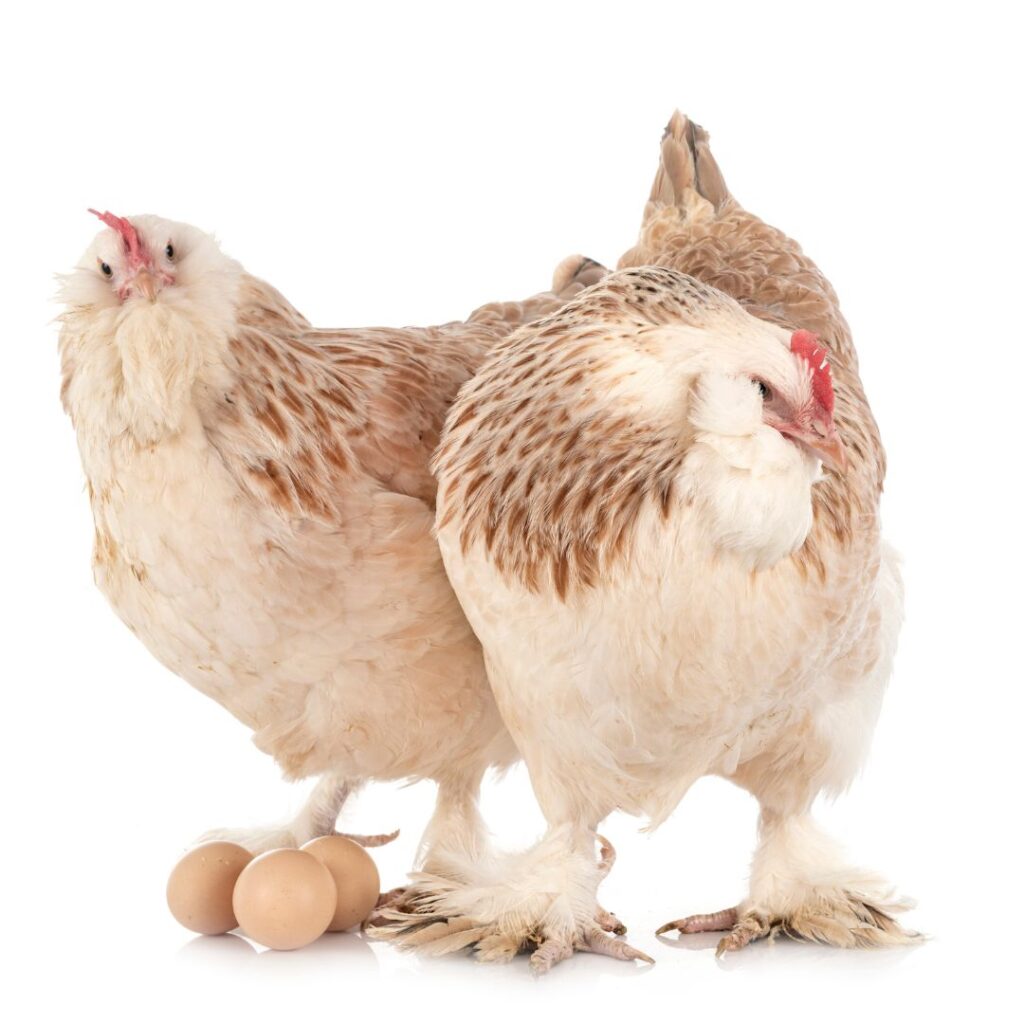
The History of Faverolles
The Salmon Faverolles is a docile utility fowl native to France’s Eure & Loire region of North Central France. Developed by farmers in the 1860s, their production alleviated the demand for poultry and eggs from the growing urban population, who had started importing “Asiatics”- Brahmas, Cochins, and Langshans.
Poultry farmers carefully and selectively bred these Asiatic breeds with Houdan fowl with Dorkings to maximize efficiency and effectiveness to form the renowned Salmon Faverolles.
Part of what made this bird so unique was its odd yet endearing physical feature:’tete de hibou’ (the head of an owl) was how it was described because of the beard and muffs on its head–giving it an owl-like appearance—a true marvel of French ingenuity.
Considering it to be the best French breed produced in the 1900s, little surprise it was introduced to England and America from 1901-1902 with significant enthusiasm.
One of 11 chicken breeds on the ‘threatened’ list with The Livestock Conservancy, the Faverolles chicken is making a comeback in the U.S. and is increasingly popular here. Read more about The Livestock Conservancy here.
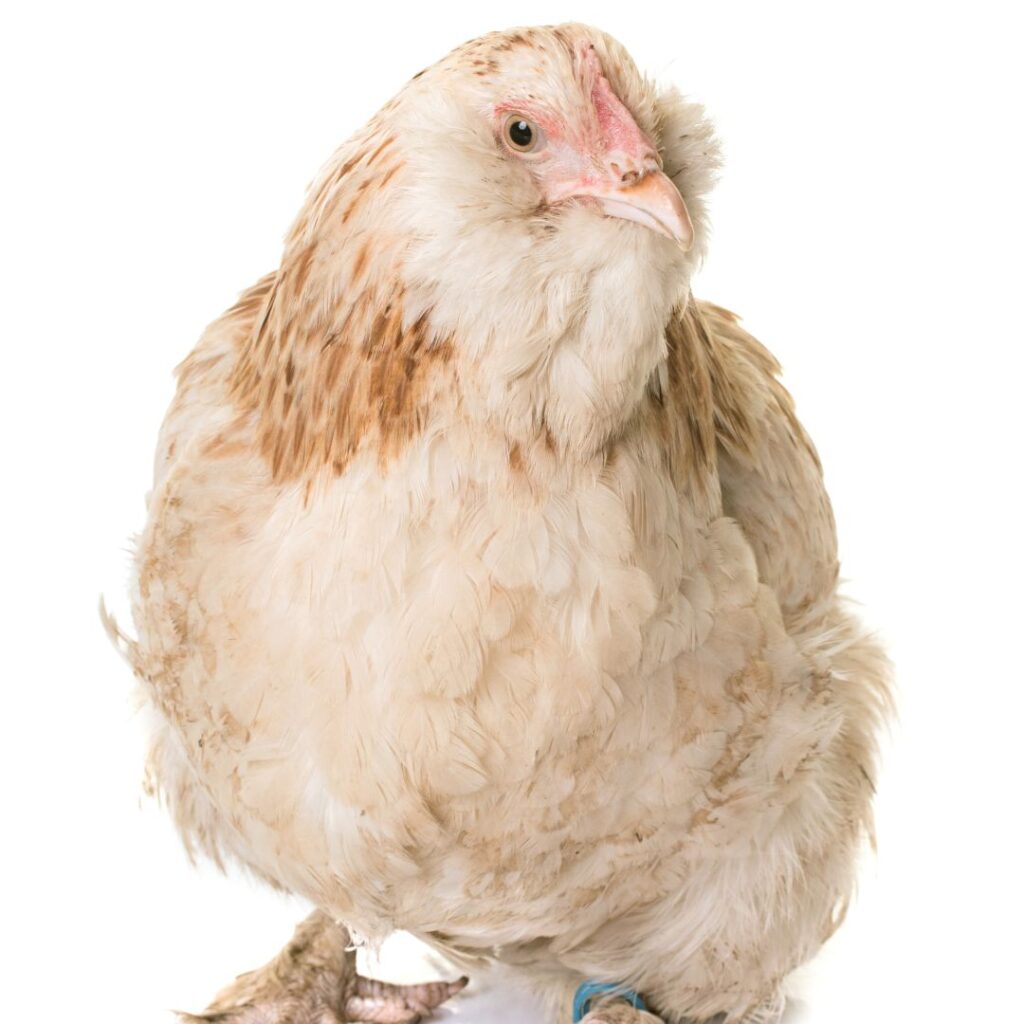
Faverolle Chicken or Faverolles chicken?
The proper spelling is with the “s.”
Appearance Of The Salmon Faverolles Chicken Breed
Size: Medium-sized chicken breed. Hens – 6 1/2 lbs, Roosters 8 lbs
Heads: Beards and muffs give them that ‘owl-like’ appearance.
Combs and Wattles: 5 points combs and small to non-existent wattles (red)
Face: Red
Eyes: Reddish Bay
Beak: Salmon (Salmon Faverolles) White (White Faverolles)
Feathering: Fluffy and full feathering, giving them a more prominent appearance. (Have you ever washed a big fluffy dog down only to realize it’s only medium or small under all that fur? That’s what it’s like owning a Faverolles) Feathering flows down through their legs and toes.
Legs and Skin Color: White, feathered legs and feet
Toes: Five toes
Body Shape: This chicken’s trapezoid-shaped body is compact, deep, and wide, with a broad back and chest with the keel running relatively deep. All this adds to their ‘larger’ appearance.
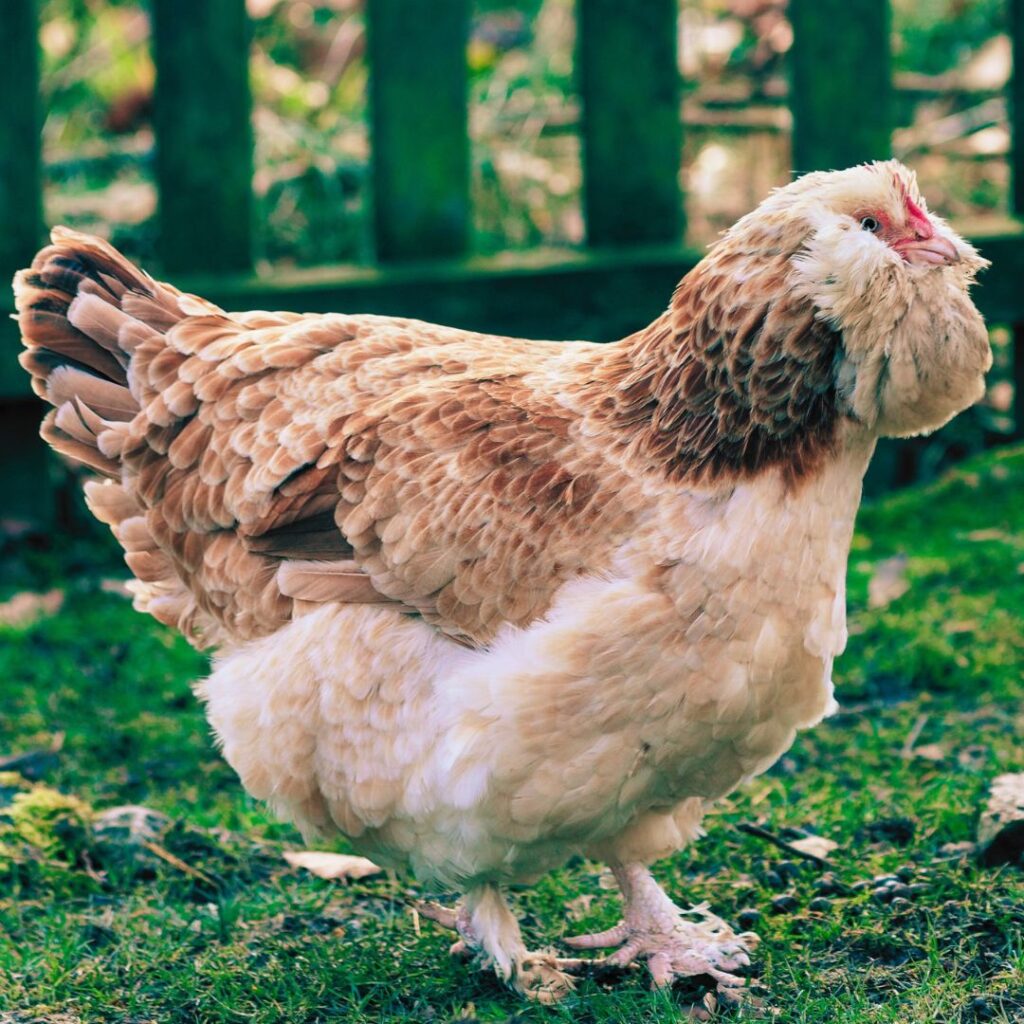
Salmon Faverolles Hens VS Roosters
Aside from size being approximately a 2 lb difference between the sexes, the feather colors are significantly different. They both have muffs, beards, full feathers, and five toes, and their body shape is the same.
However, the coloring would make them look like different birds if it weren’t for all those other similarities.
Faverolles hens are medium-sized chickens weighing approximately 6 1/2lbs with deep compact bodies. They have beards muffs that are a rich ivory creamy color.
They have salmon, brown feathering that runs from the head, down the neck, to the saddle, and tail feathers. (this color is exclusive to the Salmon Faverolles hens) This salmon brown coloring lightens to a light honey straw color, and speckles can be seen across the chest. Under the side of the hen is a pale grayish tone that contrasts artfully against the cream.
The Favorelles rooster takes center stage in his vibrant coloring, displaying a striking color palette of black, rich honey-straw-colored, gold, and hints of white.
His beard is black, as is his undercarriage, and he has a black breast.
His hackles, back, and saddle are an eye-catching honey-rich straw color.
Wings are a rich golden color, tipped with white.
The underside of this brilliant boy is his understated slate gray feathers.
All this goodness is adorned with glossy black tailfeathers and leg feathers. The black takes on that show-stopping beetle-green hue.
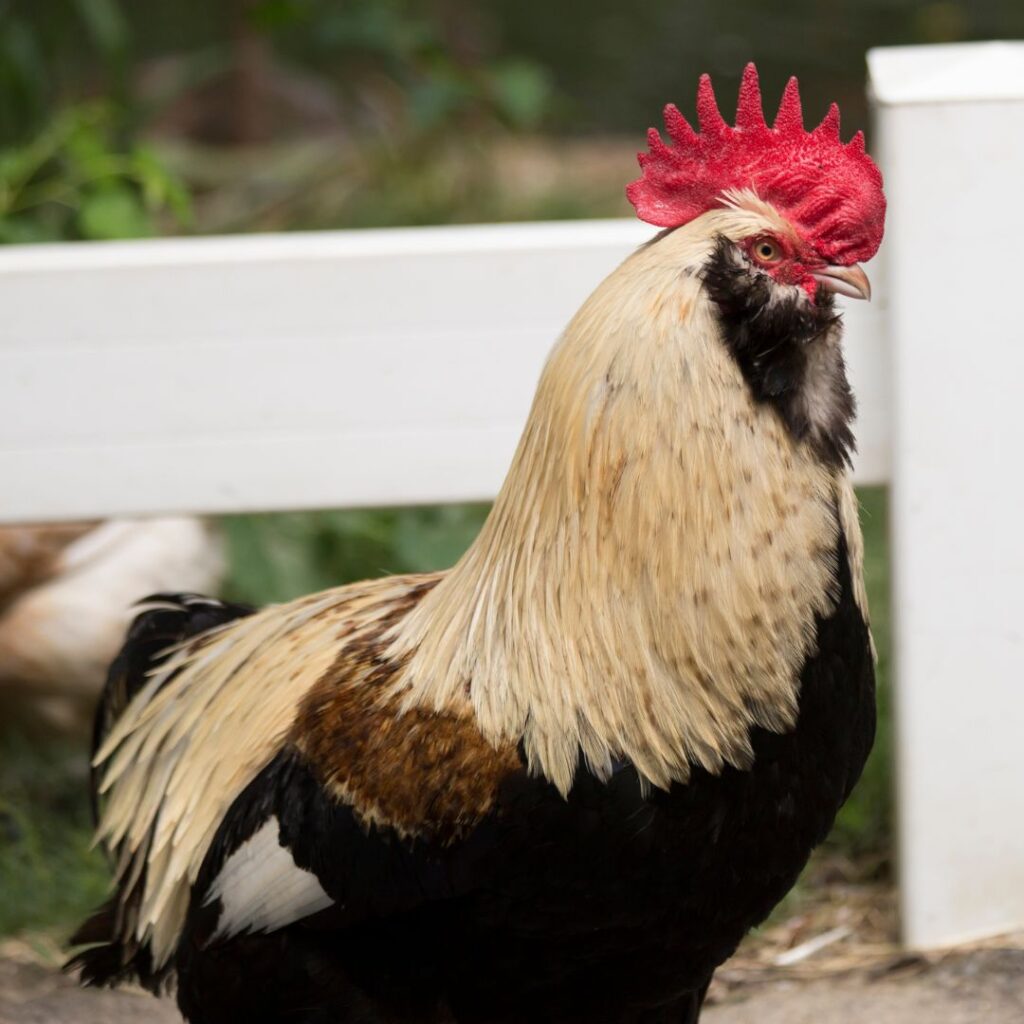
What Do Baby Chicks Look Like?
The Salmon Faverolles chicks are creamy-pale yellowish with the occasional smudge of random gray patches. Their creamy muffs, legs, and toes make them even more precious.
Variations of the Faverolles Chickens
Of all its color varieties, only Salmon(1914) and White (1981) are recognized by the American Poultry Association. Read more about the American Poultry Association here.
- 1914 – Salmon Faverolles
- 1981 – White
- Black
- Blue
- Laced Blue
- Cuckoo
- Ermine
- Mahogany
- Splash
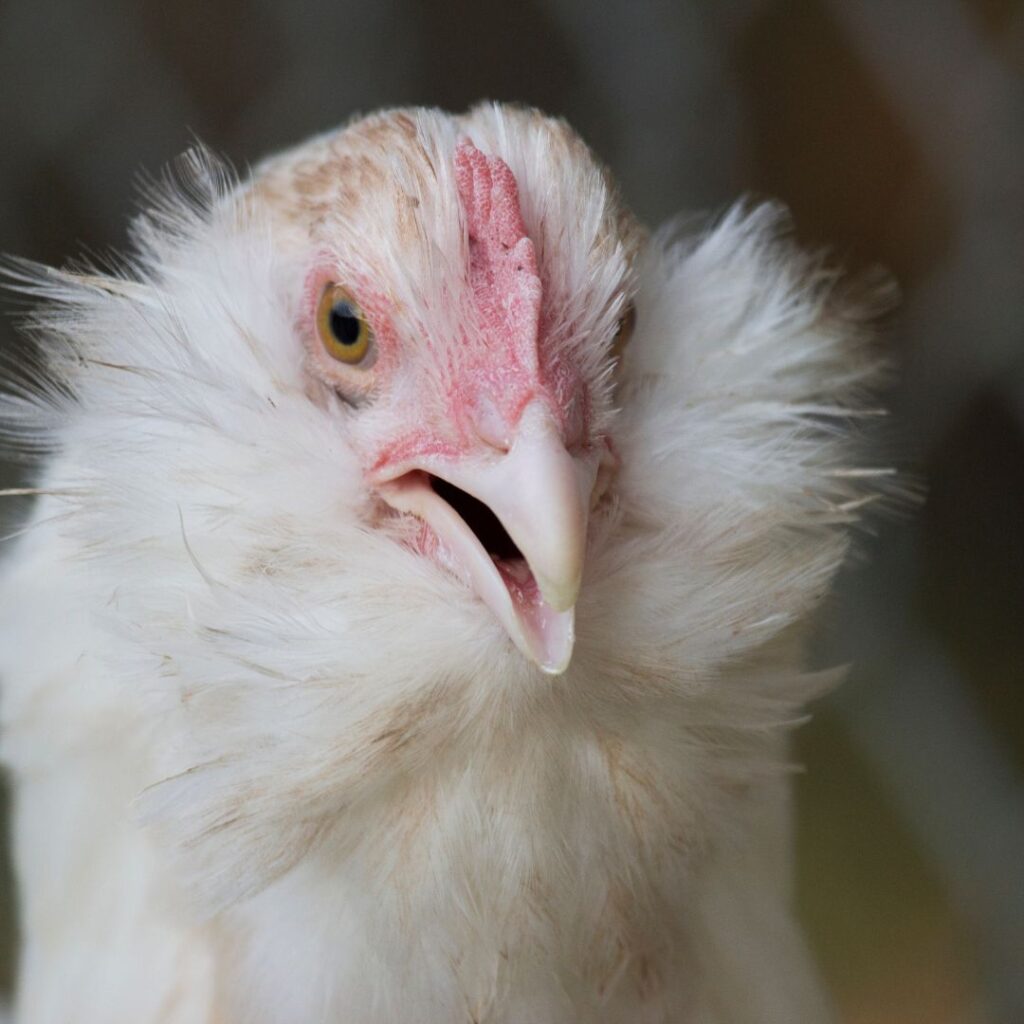
Bantam Faverolles
These bantams are ‘miniatures’ of the standard breed Faverolle chicken. Aside from size, they are relatively identical to their standard-sized ancestors.
Hens weigh roughly 1 3/4 lbs (26 ounces), and Roosters Weigh approximately 2 lbs (30 ounces)
Eggs are bantam-sized (tiny).
The American Bantam Association recognizes five varieties of Faverolles:
- Black
- Blue
- Buff
- Salmon
- White
Read more about the American Bantam Association here.
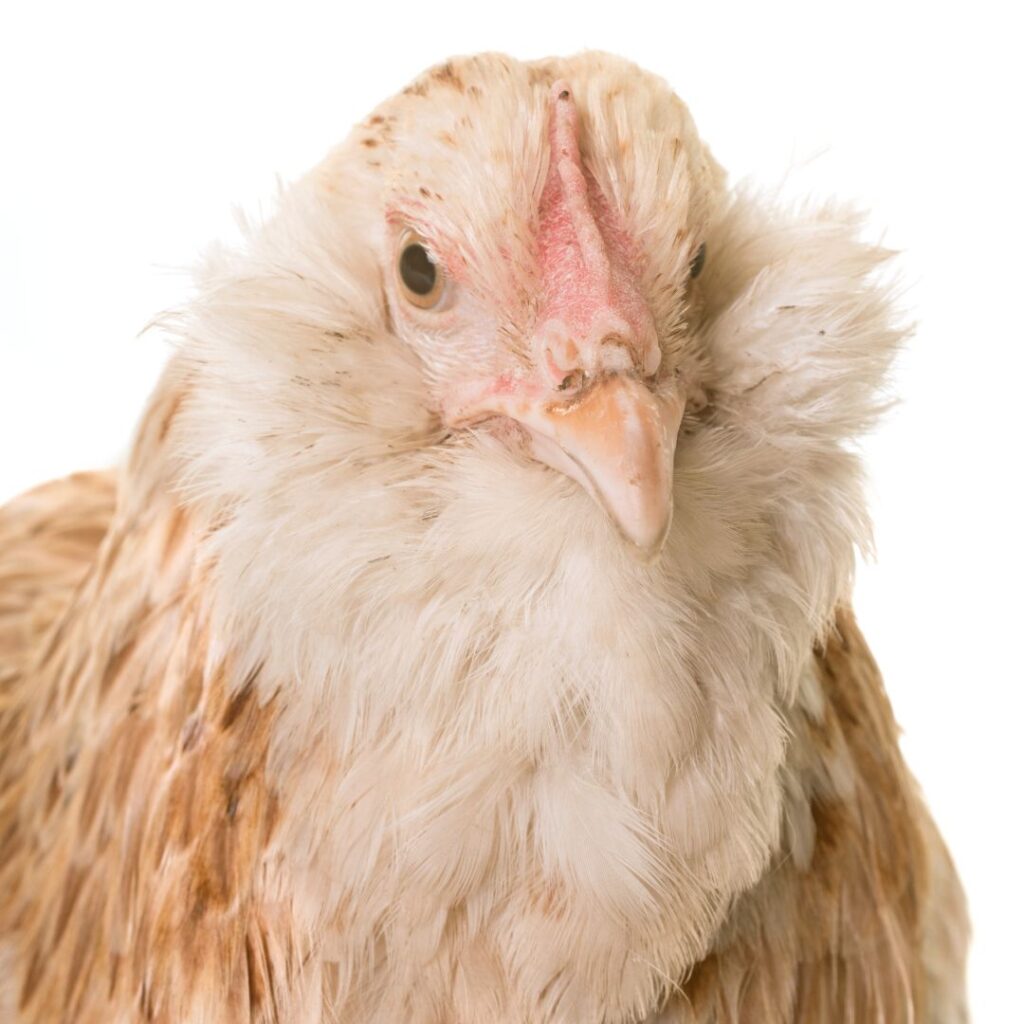
Personality Of A Faverolles Chicken
One of the reasons Salmon Faverolles have gained popularity among chicken owners is their sweet personalities and pleasant nature.
They have earned the reputation of being gentle, friendly, and calm in nature but don’t let that fool you – they are also energetic, adaptable, and curious.
Often, chickens can be pretty shy around humans, but that is not so for the Faverolles. They are known to be social and get along with people of all ages, making them an ideal breed for beginner or experienced chicken owners, even as excellent pet chickens.
This breed tends to the middle of the pecking order with mixed flocks. However, they’re such good-natured birds. Even the roosters don’t tend to bully the birds on the lower end of the pecking order. When presented with being the less assertive breeds in the flock, they tend to busy themselves and avoid confrontation pretty well or will move on from a conflict without letting it scare them into a corner.
Are Faverolles Roosters Aggressive?
This guy will guard his flock like a boss. He may be docile but never back down if called upon to protect his ladies. He is also a master at sounding the alarm to warn of nearby predators or other threats.
Salmon Faverolles roosters are generally more docile and less aggressive than other breeds, making them a good choice for families or those who want a less aggressive bird.
Salmon Faverolles are a great breed of a rooster to have in your home flock. They tend to be more docile and friendly than other breeds, often described as gentle and graceful.
These birds interact with their flock in a very pleasing way, rarely displaying aggression, but that’s on the downside: since they’re likely at the bottom of the pecking order if housed with more aggressive breeds, it might be best to keep them separate from those kinds.
Altogether these make for an excellent breed of the rooster – their docility is outweighed by their beauty and peaceful presence, making relaxing times all the more enjoyable with these birds around.
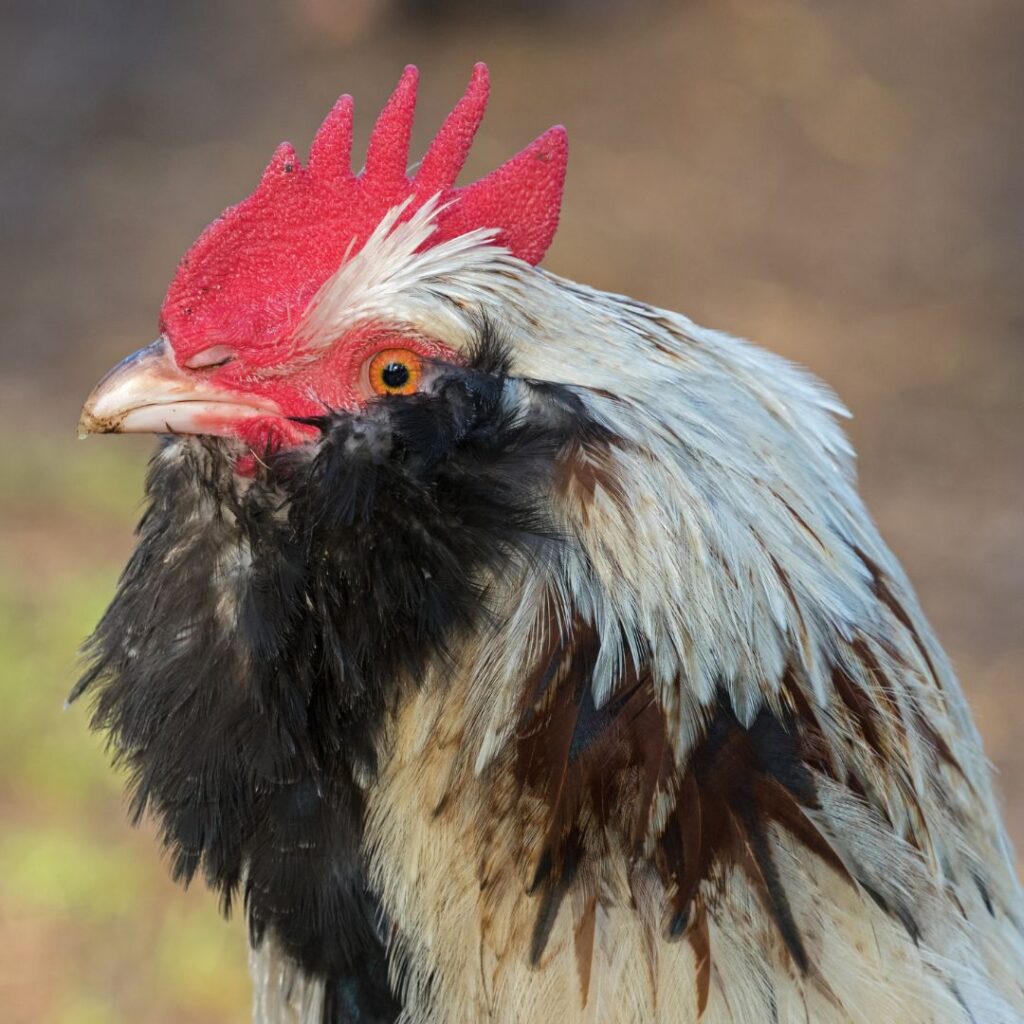
Salmon Faverolles Hens; Egg Laying
French farmers knew what they were doing when they refined this breed. The Hens are good egg layers and will provide a family with enough eggs to eat without waste. They’re even known to provide winter eggs.
When do they start laying eggs?
Your Salmon Faverolles will start egg production around 18-20 weeks. It’s best to prepare those nesting boxes early so your hens can adjust to using them earlier.
Hens are good layers for 4-5 years. They may slow down a bit, but you can expect a hen to lay throughout the majority of its lifetime, including winter months
What color and size eggs are Faverolles Eggs?
Faverolles hens will provide medium to large size eggs. The egg color is light brown, sometimes pink tinted eggs.
How many eggs do Faverolles Lay?
The Salmon Faverolles egg laying ability is decent, providing approximately 3-4 eggs per week = 180-200 per year.
Being winter layers, you won’t have to store as many eggs throughout the winter months as with other breeds.
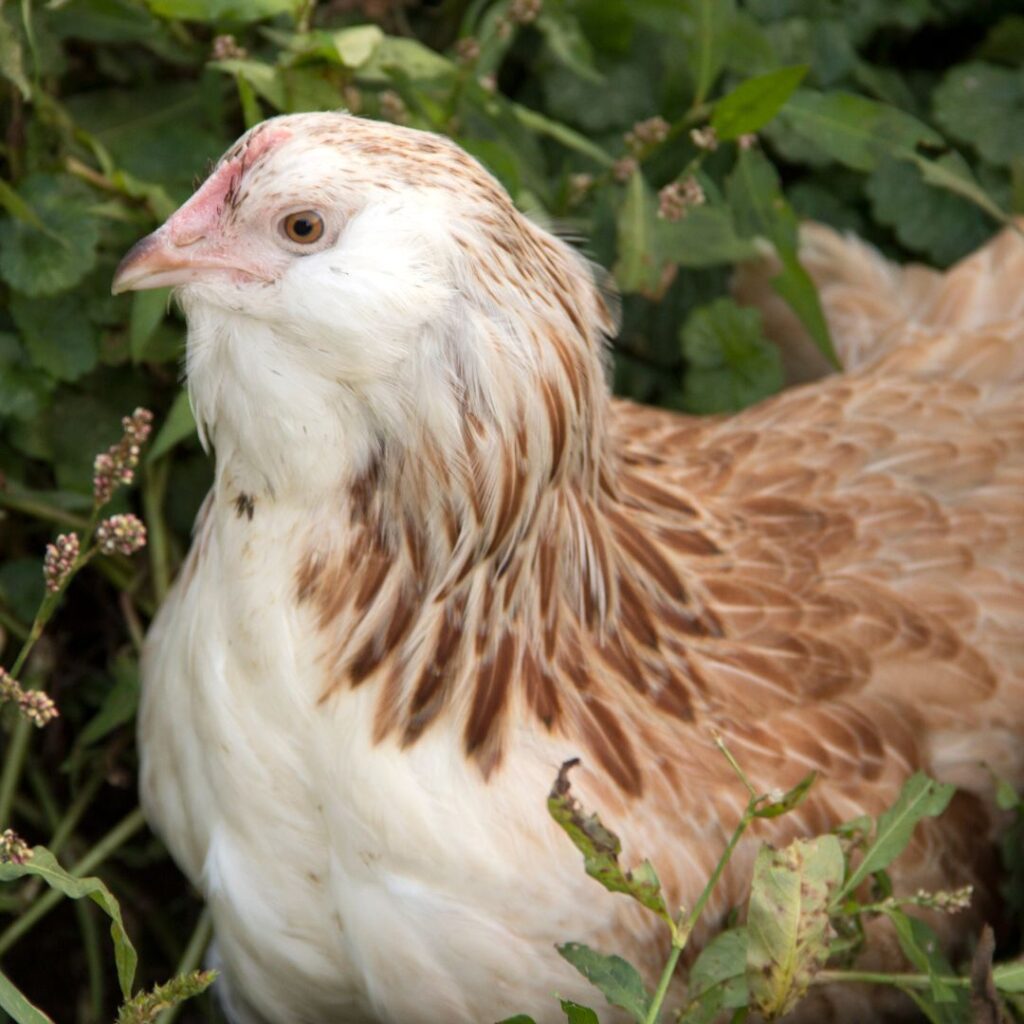
Are The Faverolles dual-purpose breeds?
While these are considered a dual-purpose breed, the U.S. standard size for the Faverolles chickens is much smaller than the British breeders raising Faverolles at 9-11 lbs. While the meat is still good, the primary purpose of this chicken in the U.S. is as an egg-laying bird.
Are The Faverolles hens Broody?
If you’re looking for chicken breeds that are good for sustainable flocks, then the Faverolles hen is a top choice. The hens tend to go broody; even the roosters make great chicken daddies. Having these hens in your flock means you won’t need to purchase Salmon Faverolles chicks in the future.
Read more about the best and worst breeds of broody hens here.
How Many Roosters Can You Have?
If you are looking to raise a sustainable flock, the best ratio for Favorelles is 1 Rooster: 8 Hens (1:8).
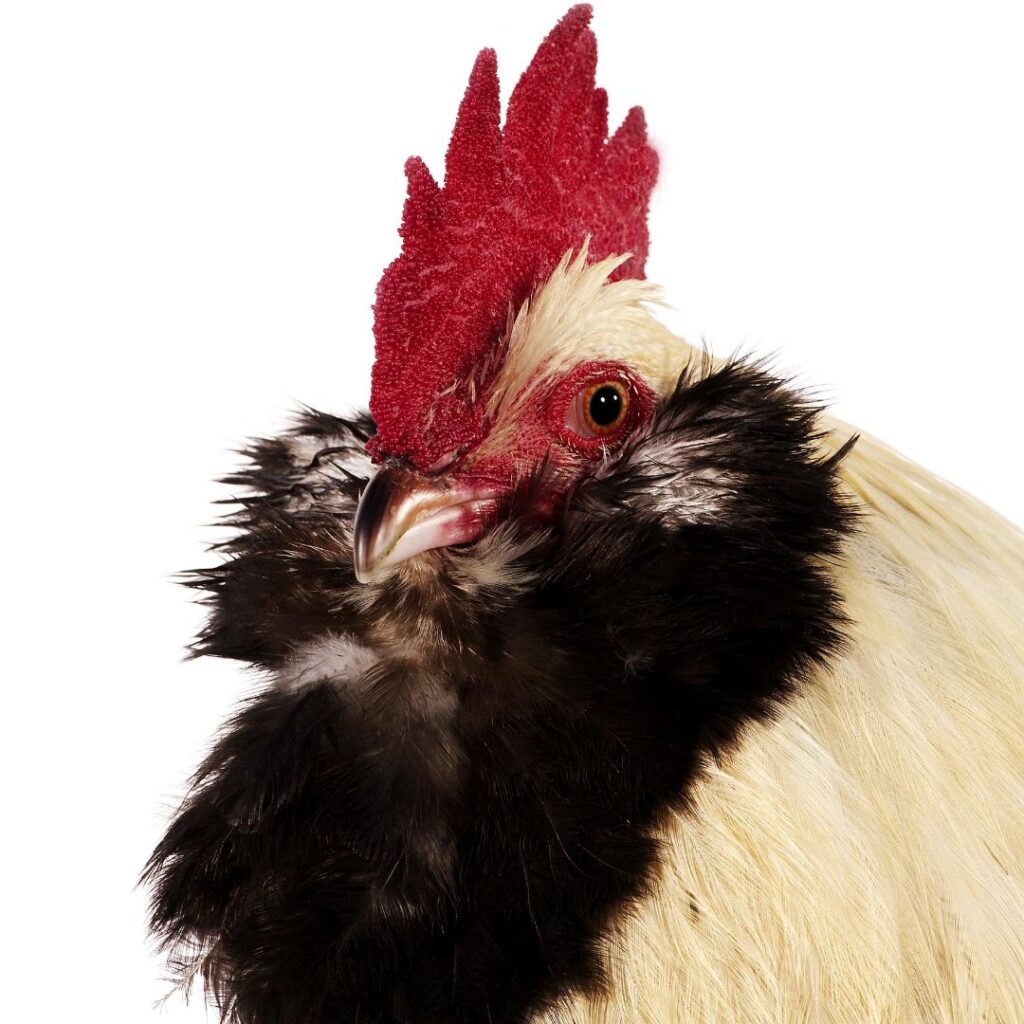
Caring For Your Faverolles Flock
When deciding on the perfect size chicken coop for Faverolles, you’ll want to consider their space needs and individual habits. If in doubt, bigger is better.
If you plan to add new chickens or hatch baby chicks yearly, ensure your coop is large enough to accommodate any potential growth. One mistake many chicken owners make is getting a pen that is too small; overcrowding can lead to health and behavioral problems. On the other hand, getting a chicken coop that’s too large could be an unnecessary expense; weigh all options carefully before making a decision.
The Chicken Coop Needs
Every coop, regardless of climate, should be well-ventilated. Proper ventilation will let your flock stay warm in the winter (keeping moisture levels down) and cool in the summer (reducing humidity). Properly ventilating your coop should always be your first priority when constructing or purchasing a coop.

Space For The Salmon Faverolle chicken
Faverolles need space to move around. It is recommended to have at least 6 sq ft per bird. This gives them enough room to turn around, stretch their legs and flap their wings without feeling confined. Anything less than this will result in stress and potential behavioral problems.
Your indoor coop space must include roosts, nesting boxes, a place for daily feed and water, and leg room for fair weather days.
Remember to estimate any yearly flock increases if you allow broody hens to hatch eggs or add new birds to keep your flock productive.
Roosts
Roosts need to be 8-12″ per bird. Place roosts near the back of the coop area and approximately 8-12″ away from the wall. Roosts can be placed at least two feet above the floor and no more than 4 feet high, considering the Faverolles cannot fly.
Birds will roost closely together in the winter to warm themselves and spread out more in the summer, so extra roosting space is always appreciated as the seasons change. This will also help you be prepared for possible additions to your flock in the future.
Nesting boxes suited For This Light brown egg size
Most people are chicken-keeping for eggs, so this space is needed to help keep your eggs from getting stepped on or pecked at, encouraging your hen’s best egg production.
Nesting boxes should be 12″ square, which is the most commonly used nesting box size. These boxes should be placed away from or above the roosting perches, so hens aren’t disturbed while laying. It would be best if you also located these away from doors or windows.
Feeders and Waterers
Keep the food and water containers off the floor at all times. Make it a routine to clean them often, ensuring that your chickens have access to ample amounts whenever needed.
During cold seasons, change out frozen water as temperatures dip below freezing. Heated waterers can come in handy during the winter too.
During summer, try adding ice cubes to the water to keep the water fresh and cool.
The Outdoor Chicken Run
Your outdoor run will likely be the most used area for your Faverolles flock. This is where they’ll forage, socialize, and get their needed exercise and fresh air. You want this space to allow for plenty of room and a place they feel safe and free from stress.
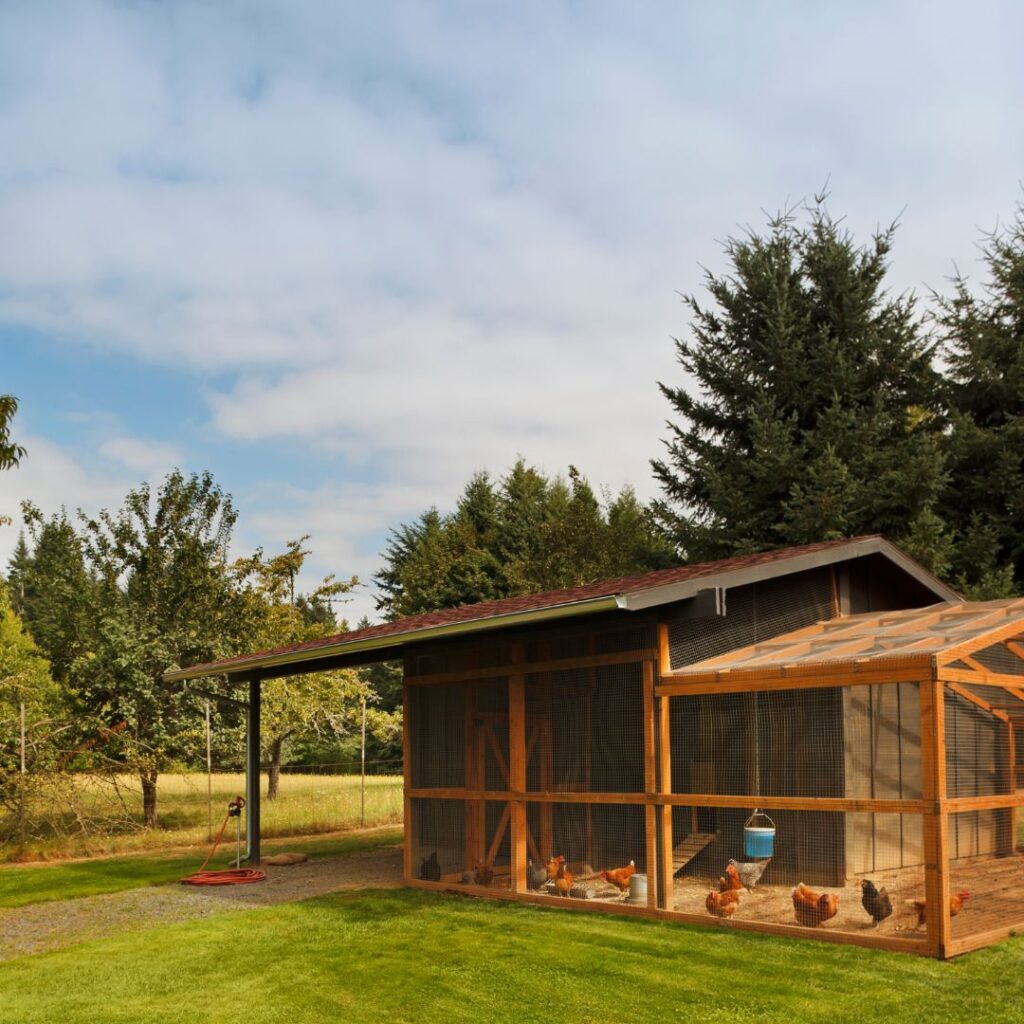
Outdoor Run Space
Giving other chickens lots of run space is the best way to keep them healthy and content. You should have at least 10-15 square feet of room for each bird.
To increase the space available to your chickens, incorporate perches at multiple heights and something for them to stand on, like boxes or upside-down utility pails. Even simple things like step ladders, tree stumps, and logs can work great in a run.
Toss in treats, piles of dried leaves, unfertilized grass clippings, and garden scraps, and you’ll have happy, healthy birds excited to get back inside to work on that egg production.
This habitat allows them to explore and engage in natural behaviors like perching and scratching, as well as offers plenty of fresh air.
Fencing height
Faverolles can’t fly, so the fence height is really more about keeping predators out. A minimum 6′ high fence is always best. Not many predators can jump a 6′ fence. This will allow for the vertical elements inside the coop as well.
Overhead ‘fencing-type’ like chicken wire is always a great idea to plan for. An overhead predator can be equally as dangerous as a ground predator. Creatures like hawks and owls are happy to swoop in and cause chaos and worse inside a coop.
Overhead Covering
If at all possible, a roofed covered area is perfect. Your Faverolles and their feathered legs and feet will thank you. Once those feathered feet and legs get wet from a cold rain or snow, your bird will get chilled and could become sick. Even worse, this could lead to frostbite, which is painful and deadly in most chicken breeds.
At the very least, be sure to have a tarped area to provide shade in the summer and protect those fluffy feet and legs from wet rain and snow in the colder months.

Dust Bath
A dust bath will not only help your chickens look nice and those salmon feathers look beautiful, but it also rids them of pesky things like lice and even scaly leg mites. These are essential to a healthy chicken.
A dust bath is a welcome and necessary addition to any coop. This can take up a little space. You can dig out a shallow hole or use an old kiddie pool, even an old tire and fill it with diatomaceous earth, sand, and even pretty-smelling beneficial herbs.
Free-Range and Foraging; Faverolles Chicken
With their calm demeanor, Faverolles make extraordinary chickens to keep in the backyard! Thanks to their intelligence and curiosity, they love foraging for food and exploring their space.
However, they lack a clear line of vision due to their fluffy facial feathers. They are also not able to fly to safety.
While they’re intelligent and alert chickens who enjoy foraging to supplement their diet, they need a watchful eye looking out for potential danger.
To ensure your Faverolles’ safety, it is best to establish a restricted free-range environment with places to roam where they won’t be vulnerable to predators. Luckily, these chickens are happy to be confined with a nicely sized chicken run.
A few extra precautions and some human supervision mean these birds will be healthy and happy.

Are the Salmon Faverolles Good Urban (City) Chickens?
While they’re pretty adaptable to confinement, they’re super chatty birds and can get very animated and loud in their conversations. While not all Faverolles chickens are noisy, most are by their social nature and level of enthusiasm while chatting. Read about quiet chicken breeds here.
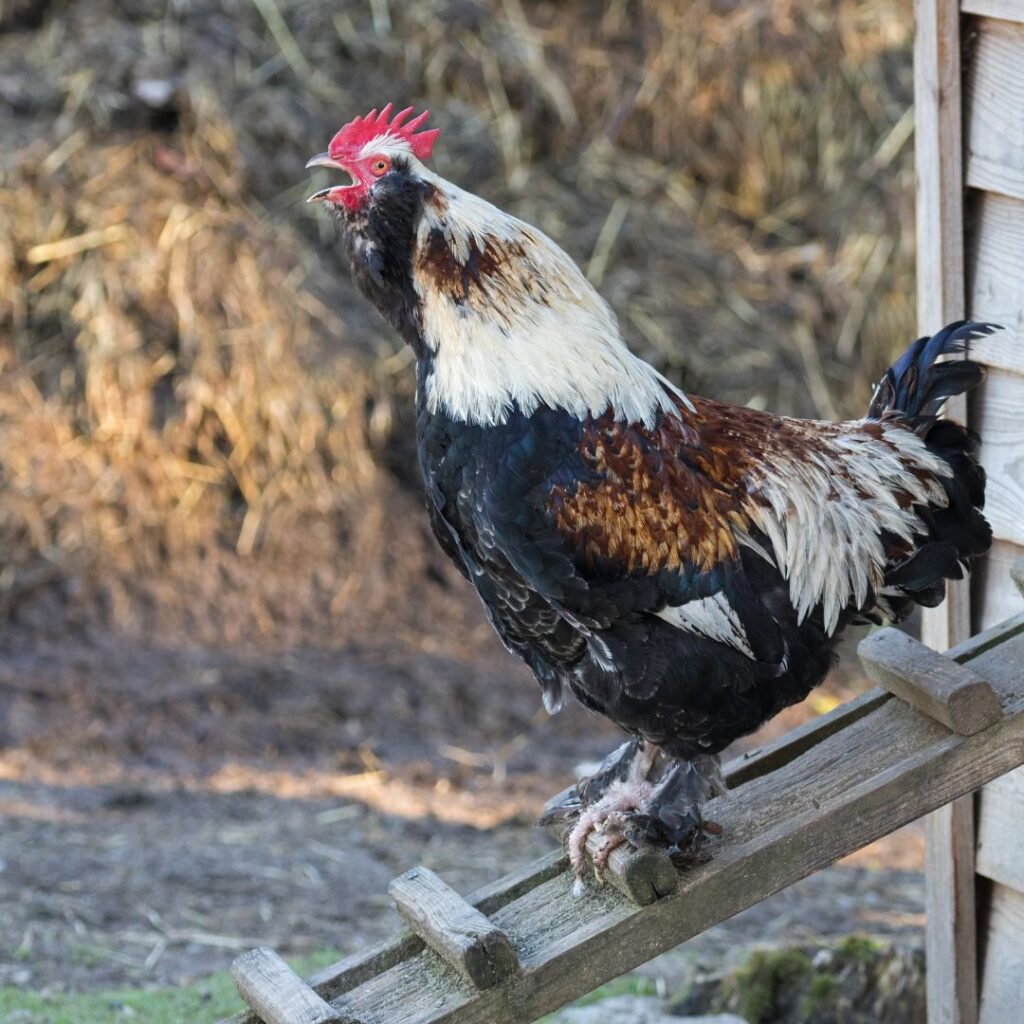
Are Salmon Faverolles Chickens Cold Hardy?
Their fluffy feathers, feathered legs, and muffs will keep these birds nice and warm through winter. However, those feathered legs do need to be kept dry to avoid frostbite and causing unnecessary chill (think about wearing wet socks in the winter, yuk!)
As with any breed, you need to provide proper housing and other conditions to help your flock stay healthy and strong.
Read about chicken care in the winter here.

Heat Tolerant?
Faverolles chickens can tolerate heat with proper shade, lots of water, and proper coop ventilation. The hot weather is not their strong suit, yet they will be able to tolerate it quite well with proper care.
Life Expectancy of the Faverolles Chickens
Your Faverolles chickens have a life expectancy of 5-7 years. Although, a well-cared-for bird can live longer. While they may have been past their egg production years, an older hen can still contribute to setting on and hatching eggs (if broody), helping in raising chickens from young ages to adults in the flock. Older hens are a good balance for other flock members.
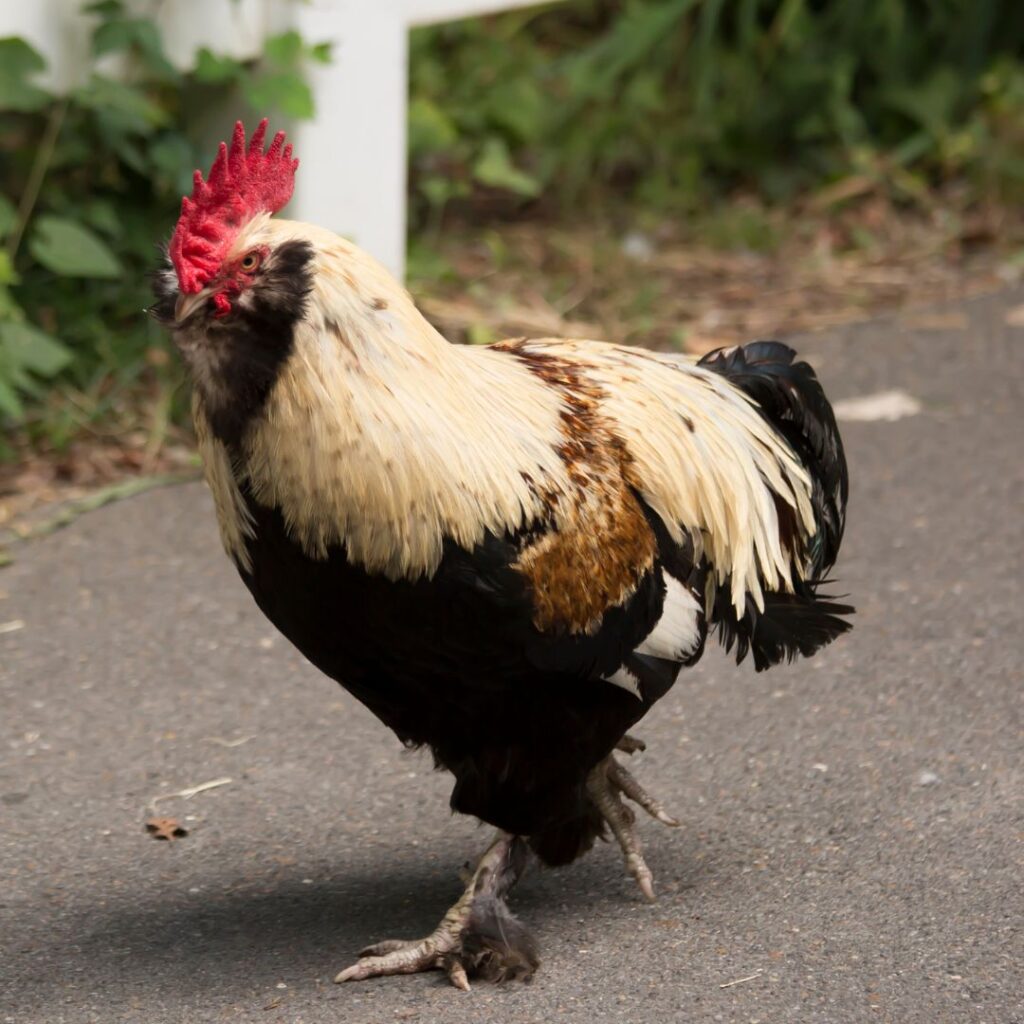
Summary: Salmon Faverolles – Is This Chicken Breed Right For All Chicken Keepers?
Salmon Faverolles chickens are an excellent choice for many chicken owners and enthusiasts, thanks to their friendly personalities, attractive appearance, dual-purpose utility, and a perfect choice for a sustainable flock.
These charming and gentle birds can be a valuable addition to any backyard, particularly for those looking for a less aggressive rooster or a sociable type of chicken that can adapt to various environments.
If you’re considering adding Salmon Faverolles to your flock, you’ll find that these sweet-natured chickens bring joy, entertainment, and a rewarding experience to your life as a chicken keeper.



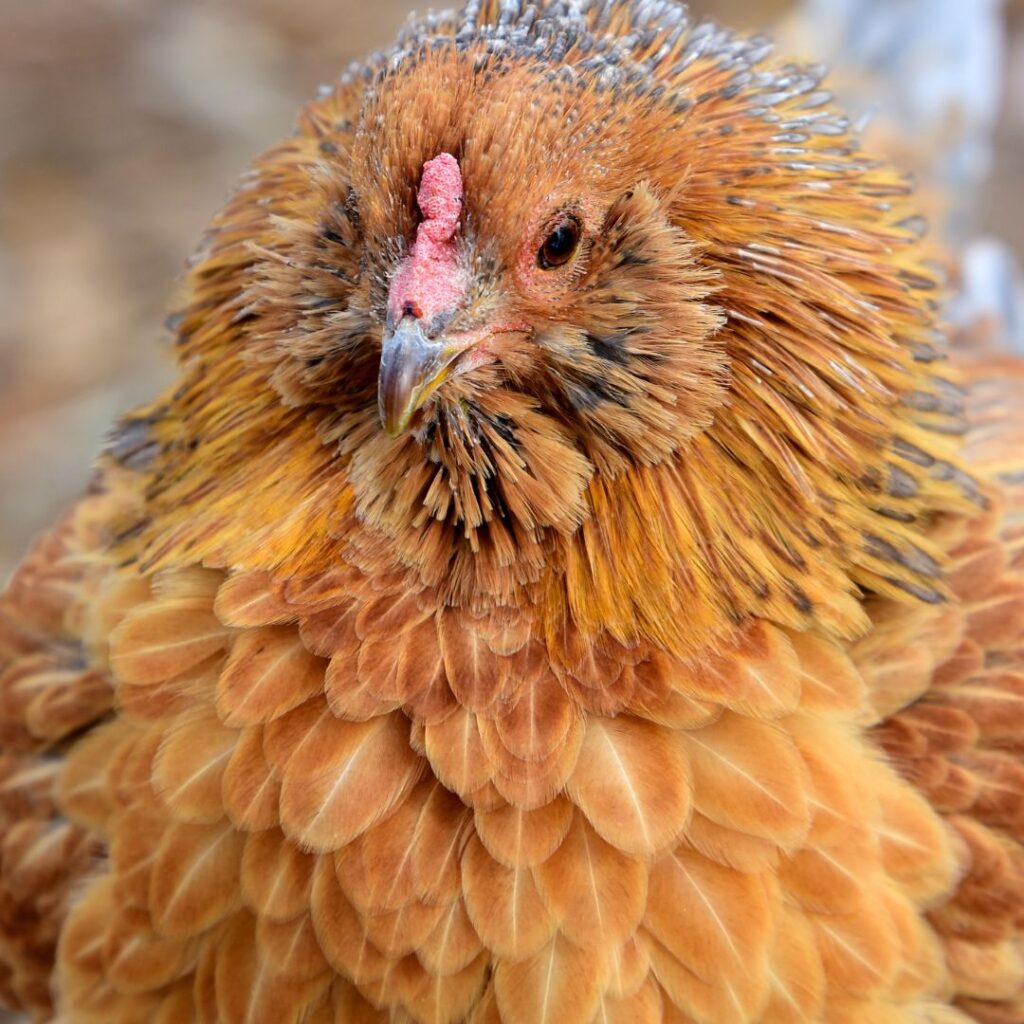
Pingback: 51 Heritage Chicken Breeds At Risk
Pingback: Delaware Chicken Breed; Everything You Need To Know
Pingback: What chickens can Teach Children, A Great Pet Choice - Gilmore's
Pingback: 15 Best Rooster Types & 3 Bantam Roosters: Sustainable Flock